Genre: Shmup Developer: NMK Co. Publisher: Treco Players: 1-2 Released: 1991
Once in a while, a game comes along that goes virtually unnoticed by the gaming public. In 1989 a shmup called Task Force Harrier by UPL came and went in the arcades with little fanfare. Two years later, Treco brought this arcade game home to the Genesis. Equally little attention was given to the game, and before long, it faded away under the weight of bigger AAA titles and more well-known arcade ports. So is this somewhat obscure shmup worth your attention? Read on.
A radical group of communists has come out of hiding, and they’re determined to take the world for themselves. On top of their regular forces, they have a large war bird ready to help them achieve their nefarious goal… the TU-190. The U.N. has declared Defcon 2, and it’s up to Falcon to plow through thirteen stages of enemy forces protect the USA, and the world. You’ll need all of your Harrier’s guns, flash bombs, ground weapons, and missiles to come out victorious, and powering them all up will be key to making it through.
Graphically, the game is a good port of the arcade game. The graphics have a lot of little details in them, from the ground weapons going off, to the small guns rotating to fire at you. The enemy ships share this level of detail, regardless of how large or small they are. That’s not to say the visuals are identical to the arcade’s, as they aren’t. The colors in the Genesis version are noticeably brighter than the arcade, and the shading is more subdued. There are also some visual effects and stage transitions that are either absent or altered. But despite these changes, the game still holds up well, thanks to the details and varied types of backgrounds.
Aurally, the Genesis version is a mixed bag. It doesn’t have the digitized samples for the missile launches, explosions and such from the arcade. In their place, are higher pitched, less meaty effects. Some still sound alright, while others come across as a bit wimpy and NES-ish, which really doesn’t fit too well. I know digitized samples take up a lot of space, but I don’t see why non-digitized ones should sound so weak. It’s also disappointing that some effects were simply omitted, like your guns firing for example. The music, while again not featuring the higher quality samples from the arcade, still sounds good. There aren’t a lot of tunes, which means a number of them repeat, but these were redone more effectively than the sound effects. There also aren’t as many voice samples in the Genesis version, but the voice samples that are present are clear, and less static-laden than one might expect from the Genesis.
The gameplay is where the Genesis version got tweaked, as the “EX” in the title might suggest. Treco made a number of changes and additions to the game. First, and most noticeably, are the cinemas and between stage intermissions. You’re now given a quick intro to the stage you’re about to enter, as well as an opening cinema that gives you the basic story for the game. This is in place of the in-game graphics cinemas of the arcade game, where your plane was joined by other friendly aircraft.
The next big change, comes in the form of adjustable wingmen. In both the arcade and Genesis games, you can get wingmen that offer more firepower, and block enemy bullets. But in the Genesis version, you can select from four different positions, while the arcade only had one. These positions also affect the speed of your plane, which is a replacement for the speed up power ups in the arcade game. You also can pick up flash bombs, which do a small amount of damage to enemies, and clear the screen of enemy bullets. From there, the two games stay pretty similar. Machine guns that can powered up numerous times, three type of ground weapons that can powered up (cluster bombs, straight-line bombs, and wide-spreading bombs), three types of weapons for your wingmen (guns, rockets, and homing missiles), and stages that alternate from high in the sky to low to the ground.
So what’s wrong with the game? Well, as an arcade port, it has issues. The graphics are a bit hard to read due to the lack of noticeable shading, and this makes the game look flat… something that isn’t helped by the complete lack of parallax scrolling (even just one extra layer would have helped). There are lots of details present, but what little shading there is leaves that detail struggling to come off as well as they could. The sound effects feel weak overall, and they really shouldn’t. The Genesis has proven that you don’t need digitized samples to have good sound effects, so this area just feels forgotten about, or passed over.
So, what’s wrong with the game? Well, as an arcade port, it has issues. The graphics are a bit hard to read due to the lack of noticeable shading, and this makes the game look flat… something that isn’t helped by the complete lack of parallax scrolling (even just one extra layer would have helped). There are lots of details present, but what little shading there is leaves that detail struggling to come off as well as it could. The sound effects feel weak overall, and they really shouldn’t. The Genesis has proven that you don’t need digitized samples to have good sound effects, so this area just feels forgotten about, or passed over. Thankfully though, these are the two worst areas for the game. The only other real complaints are that you have to turn up the difficulty to Hard to get a good challenge. Beyond that, the controls are good, the music is decent, the gameplay’s been expanded a bit over the arcade, and once you up the difficulty, it can give you a good challenge without being cheap.
When you add everything up, you have a game that stands differently on two fronts. As an arcade port, it’s not as good as it might have been. On its own though, it’s pretty good. The game plays well, has a good weapon selection, has some nice additions over the arcade game, and offers up plenty of shooting action. It may not match its arcade parent, but it still does a good number of things right, and stands as a competent, overall good shmup. I think it still has enough to offer to anyone willing to try it out.
SCORE: 7 out of 10

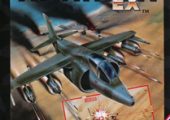
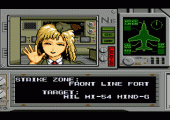
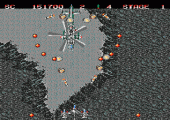
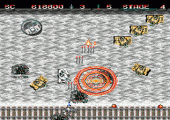
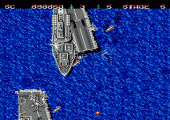
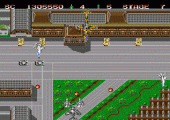
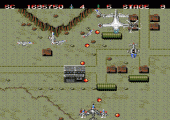
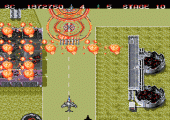
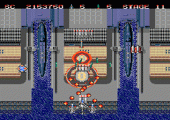
Yet another Raiden clone, with average to bland graphics (at least the first levels), slowdowns here and there, but decent music and solid gameplay. The game is 12 levels long but little variations is there to be found unfortunately, and the difficulty is pretty low apart from a couple of places towards the end. As a shmup fan I would give it a 6. If however you’re not a fan of the genre you can remove a point or two.